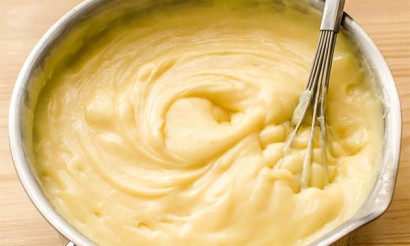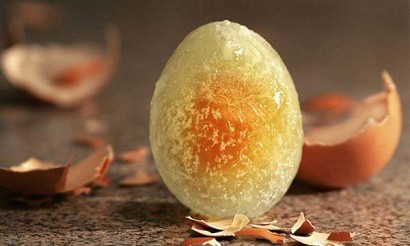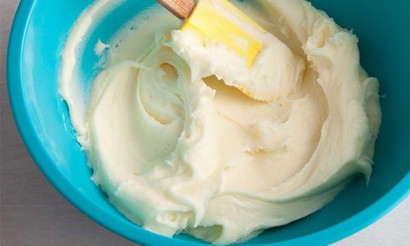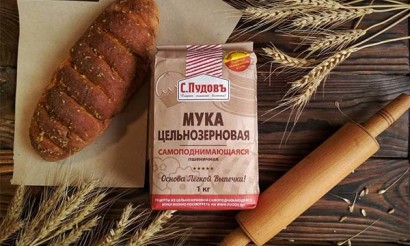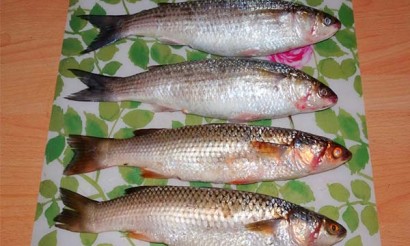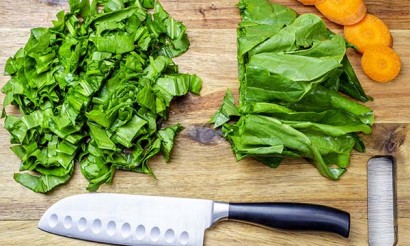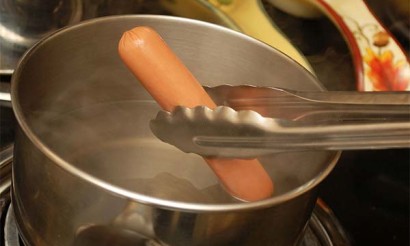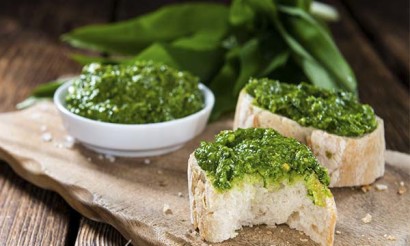What is the best pan for milk porridge?
Each type of dish requires the use of a particular utensil, which may differ in shape, material and purpose. A pan for preparing milk porridge should help to preserve the taste and consistency of cereals. Cooked porridge should not burn or stick to the walls of the cookware. Thanks to the right saucepan, milk porridge turns out perfect.
- What's the best pan for milk porridge?
- Aluminum saucepans
- Enamel cookware
- Teflon coated cookware
- Stainless steel saucepans
- Cast iron saucepans
- Ceramic cookware
- Resistant glassware
- Milk Kettle
- Features and Cooking Principle
- How to choose the right lactic cooker
- How to cook porridge so it does not stick
What is the best pan for milk porridge
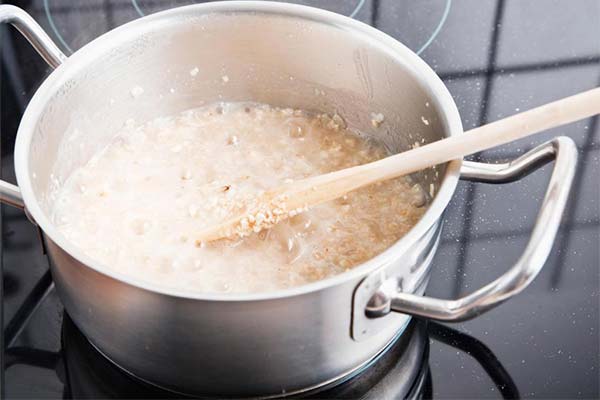
There are a number of certain difficulties in the preparation of milk porridge:
- Milk tends to rise quickly and "run off" on the stove.
- If you cook cereal with milk in the wrong cookware, it can cook unevenly, burn or stick to the inner surface.
- Dairy products quickly absorb odor or flavor.
Delicious and healthy porridge depends largely on the fat content of the milk, the characteristics of the stove heating and cooking time. If you use a dairy product with reduced fat content in the cooking process, it will affect the viscosity of the product. In such cases, it is better to use pots with thin walls. Thick cookware has a peculiarity - long heating and cooling, so in it porridge can become one big lump.
As for the fatty milk, with it cooked porridge will turn out dense and crumbly. Even if you use a thick-walled pan, the grains will not form lumps and will remain whole. The resulting groats will be fragrant and will have a pleasant creamy aftertaste.
It is important to consider the features of the stove: for gas cooking surfaces are used high pots with a double bottom, and for glass ceramic and electric stoves can be used kettles with thin walls or sauté pans with a flat bottom.
Aluminum pots
A particular characteristic of aluminum saucepans is that they can be heated quickly. You can boil porridges in plenty of milk over low heat. It is necessary to remember that it is not recommended to store dairy products in dishes made of aluminum - porridge has an unpleasant taste of metal.
Do not use cookware made of cast or forged aluminum when cooking cereals - this material promotes sticking of particles to the thick bottom and walls. If, however, such cookware was used, immediately after cooking the porridge should be poured into another pot.
Enameled cookware
Many people appreciate enameled pots for their budget price and ease of use. The only disadvantage of dishes - the fragility of the material and susceptibility to damage by temperature fluctuations. For cooking milk porridge, it is worth choosing enameled pots with a wall thickness of up to 2 mm. But even with such a thickness, it is unlikely to avoid burning of the product.
Teflon-coated cookware
Teflon is an excellent material, which is appreciated by most housewives. In pots made of this sturdy and high-quality material, porridge is perfect in terms of consistency. Grains do not stick to the rough surface of the pan, and the taste of the dairy product is bright and rich. It is worth remembering that you can not use metal cutlery when cooking in a Teflon pan, to avoid scratches on the coating.
Stainless steel pots
Stainless steel cookware is considered practical and durable. The material is not prone to rust, is resistant to food acids, it does not form chips, mechanical damage and cracks. Concerning the care of stainless steel pots, it is allowed to use brushes of high hardness and detergents for washing. Housewives can safely use cutlery made of metal for stirring food.
Cooking various porridges in a stainless steel pot has a number of features. For example, the thickness of the walls should not exceed 0.6 mm and it is better that the cookware had a multi-layer bottom. Porridge cooked in such a pot will not stick and quickly swell due to the thick bottom. Since the cookware takes a long time to cool, the porridge in it will quickly "finish" after you turn off the stove.
Cast Iron Cookware
This heavy cookware with a porous surface is considered one of the most reliable and durable. When cooking in a cast iron pot, you need to consider slow but even heating of the surface. Porridge cooked in a cast iron container will steam well and not burn. With cast iron cookware, you can cook porridge on gas or electric cooking surfaces and even in the oven. On the surface of such pots do not appear chips or scratches, it has no tendency to deform and rust. However, pots made of cast iron are more suitable for crumbly dairy-free porridge than for a thick dish with milk.
Cookware made of ceramic
Ceramic pots are sturdy utensils that are ideal for cooking dairy dishes. The porridges cooked in such pots have a special flavor and delicate taste. In cookware made of ceramics you can cook dairy products on gas stoves, electric hobs and ovens, as well as fearlessly heat in microwaves. The disadvantages of ceramic pans are considered to be fragility and poor thermal conductivity.
Resistant glassware
Pots made of this material are beautiful and have a very high cost, but they are prone to destruction from temperature fluctuations and can easily break. When cooking in such a cookware does not form scale or scum, the food retains heat for a long time, and the dishes themselves are easy to clean. Many people recommend the use of a special grid spreader, which ensures even heat distribution. To get the right consistency of milk porridge in such a pot, you need to add a lot of liquid and constantly stir the grits.
Milk cooker
Milk cooker is called a special double pot. Unlike conventional cookware, where there is a risk of burning the porridge even with constant stirring, there are no such problems when using a molokovar. It has a cylindrical shape, double walls and double bottom. When cooking in such a cookware, all the useful elements of products are preserved.
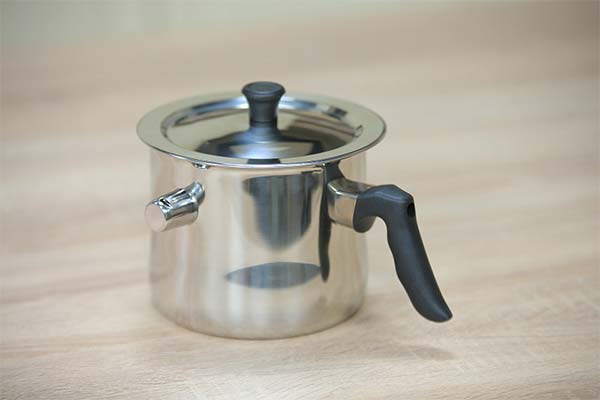
Features and cooking principle
The principle of cooking in a pot of this type is based on the effect of a water bath. The maximum temperature during operation is 98 degrees. That is, the product during cooking does not boil, but slowly languishes. The double casing of the design does not allow the porridge to burn, and the milk does not escape.
Features of use:
- Water is poured into the space between the bottom and the walls through a special whistle plug. By the way, in some models such a lid alerts the hostess and the readiness of the dish.
- In the inner part of the pot the cereal is poured and poured with milk or water. Then the milk cooker is placed on the cooking surface. The liquid inside the walls boils, and the bowl of the pot begins to heat.
- After the whistle goes off, the heat level should be reduced. The porridge begins to slowly simmer inside the pot without boiling over. The average cooking time is 5-25 minutes, depending on the type of cereal and the volume of the dish. Oatmeal or rice porridge is recommended to leave for some time on the turned off cooking surface, so that the porridge "finished".
Important! It is necessary to control the amount of water between the walls, and if necessary, top up.
The leading manufacturers on the market of milk cookers are considered to be such brands as Gipfel, Mayer&Boch, Silampos Nautilus, Tescoma Presto, Dosh-Home and Metrot.
How to choose the right molokovar
Milk cooker is certainly one of the most practical and convenient pots, which will come in handy not only for cooking milk porridge, but also for making dressings, puddings, creams, baby purees, cottage cheeses, gourmet desserts, fondue, gravy or sauce. The design will also allow you to melt chocolate or candied honey in the bowl.
First of all, you need to find a dairy cooker of a suitable volume - most often the liters of dishes range from 1.5 to 2 liters. It is better to give preference to models with thick walls - in such pots the food is cooked much faster. More convenient to use models with heat-resistant handle on the body - housewives can use them without any towels or gloves. The pot must have a lid. The presence of a measuring scale on the wall of the cookware will also be a big plus.
How to cook milk porridge so it does not stick
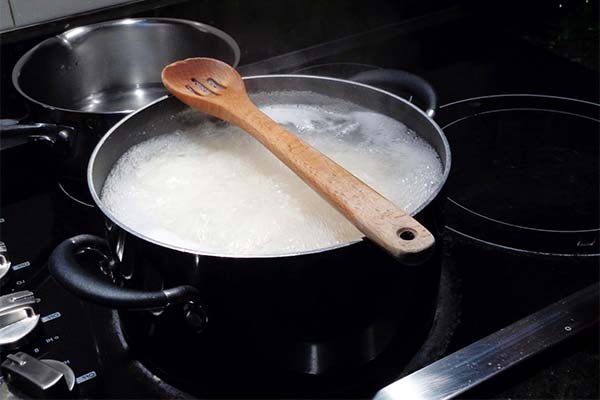
The easiest and simplest way - before heating the milk product, pour a little plain water into the pot, so that it barely covers the bottom. As soon as the liquid begins to boil, pour the milk in a thin stream (you need to stir it until it boils again).
With such cooking, porridge does not stick, and pans are washed without difficulty.
Important! Salt and sweeten need to be at the end of cooking! So that the sugar does not stick.
This is interesting: So that the milk does not "run out", experienced chefs, put a wooden spoon across the pan, instead of the lid!
«Important: All information on this site is provided for informational purposes only. purposes only. Please consult with a health care professional before following any recommendations. specialist for your field. Neither the editors nor the authors are liable for any possible harm caused by materials."

